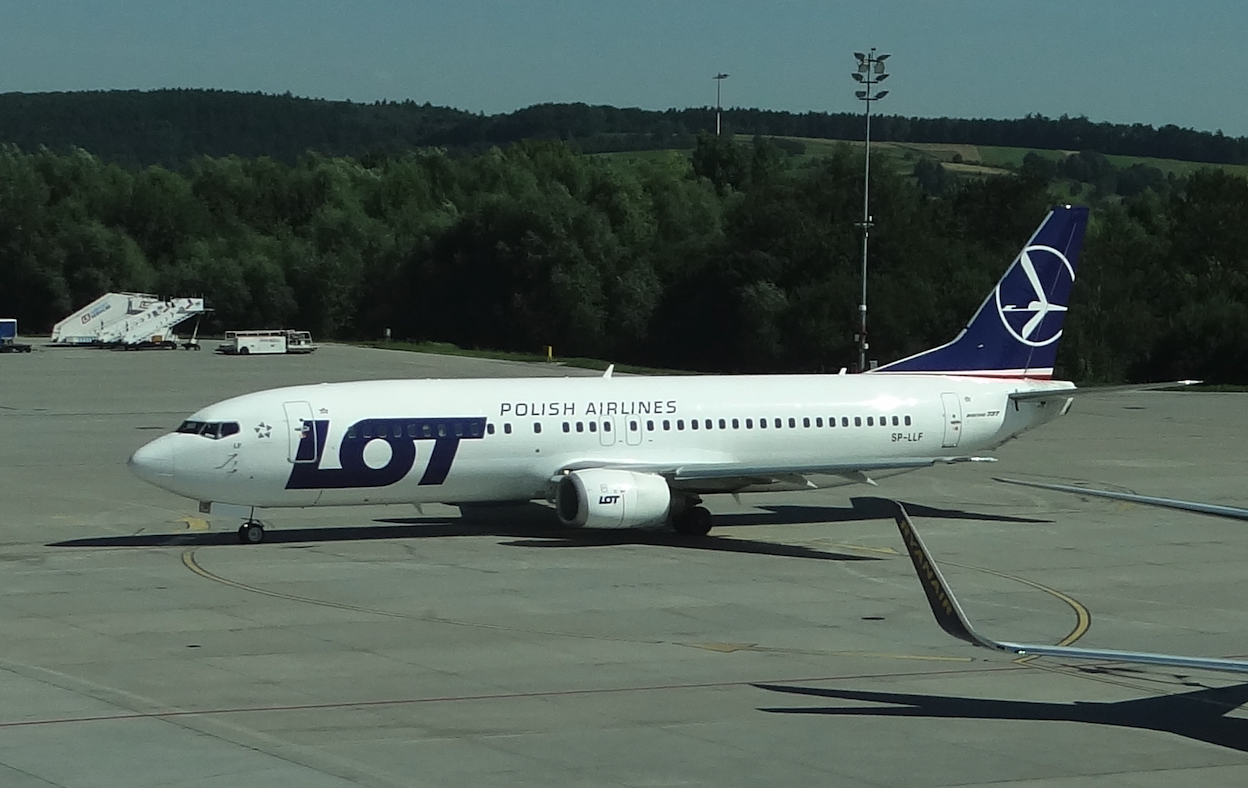Kraków 2014-11-10
Balice Airport Railway Station.
Geographic coordinates: 50.078N 19.786E. Elevation 241 m.
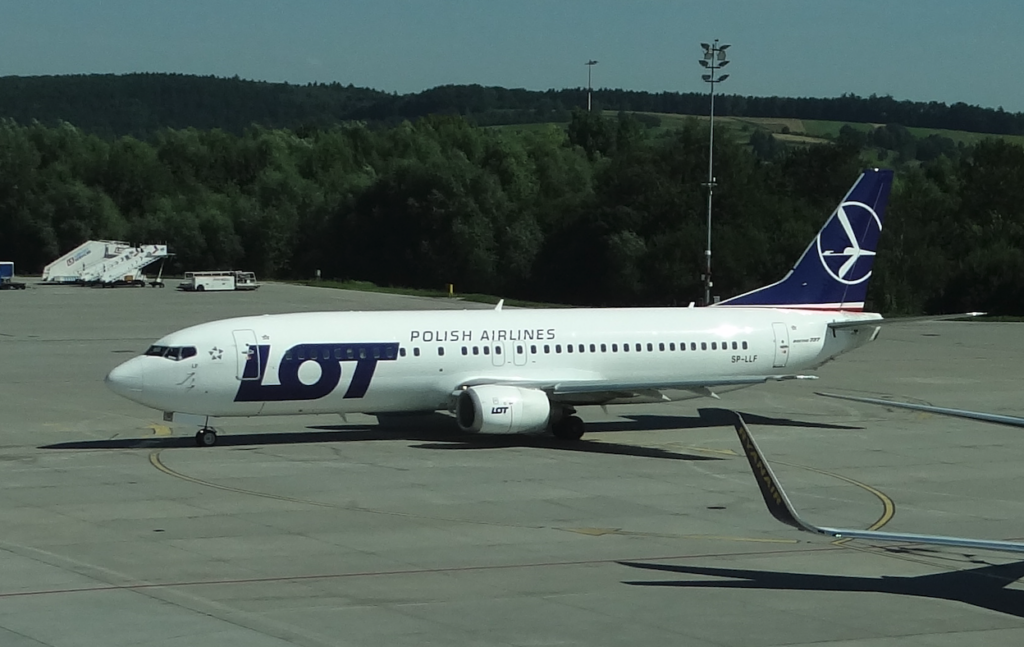
Photo description: Boeing B.737 SP-LLF is the fifteenth B.737 aircraft in LOT Polish Airlines. The aircraft was delivered in June 1997, and it was the third new aircraft of this type in the fleet. Boeing B.737-400, SP-LLF, MSN 28752 no. 2874. The aircraft was made in the 737-45D assembly. The aircraft was delivered at the beginning of June 1997, just before the visit of the Holy Father John Paul II to the Republic of Poland, and it was in this aircraft that Saint John Paul II the Great returned from Balice Airport to Rome. In February 2005, the aircraft was transferred to Centralwings. Since June 1, 2009, the aircraft has been flying with the Polish company LOT Charters. Then it returned to PLL LOT. In January 2020, the three remaining B.737-400 aircraft, with registrations SP-LLE, SP-LLF, SP-LLG; were withdrawn from passenger transport and adapted to cargo transport.
The Kraków Airport named after Saint John Paul II the Great is the second largest in the Republic of Poland after Okęcie. In 2014, it served 3,818,000 passengers. The airport is used by 17 carriers (6 low-cost, 11 traditional).
New railway line to Balice Airport.
During the construction of Balice Airport in the 1950s, a railway line was built to serve as a supply route. The siding was built as a single-track, non-electrified one. It starts at the Kraków Mydlniki railway station, which is located on the important Kraków-Katowice railway route. The siding led not only to the Airport, but also to Olszanica, where a large fuel base was built. Most goods, especially fuel, were and are delivered by train.
In 2004, the proposal for a passenger rail connection between the Airport and the centre of Kraków was revived once again, using the existing railway siding. This time, however, the idea was implemented. Since 26 May 2006, railbuses have been running on the Kraków Main Station – Balice Airport route via Mydlniki. The railbus ride from the city centre took 15-16 minutes. The train was called Ekspres Balice. In 2009, the train ran every day, almost 24 hours a day, except for late night hours, every 30 minutes. The price of a standard single-ride ticket was PLN 7. Tickets could also be purchased from a machine on the train, which accepted banknotes and gave change. The train did not stop at intermediate stations. Only some train journeys stopped at the Kraków-Łobzów stop.
The line was serviced by the following trains: two diesel railbuses (SA133-004 and SA133-005), in reserve SA101-001+SA121-001 and SA109-002. Air-conditioned trains, number of seats in the train: 140-146, number of all passengers: 300.
However, already in 2009, the railway line required modernization. First, unguarded level crossings had to be eliminated, replaced with viaducts or at least crossings with barriers. It was also necessary to move the Balice railway stop much closer to the terminal. There was also talk of possible electrification of the section from Mydlniki to the military base. Talks began at various levels of state and local government administration. Councilors from districts located along the railway line joined the discussion. Almost immediately, the issue of building new railway stops arose, so that residents of the peripheral districts of Krakow could also use the railway line. Things were taking a positive turn and specific decisions were made.
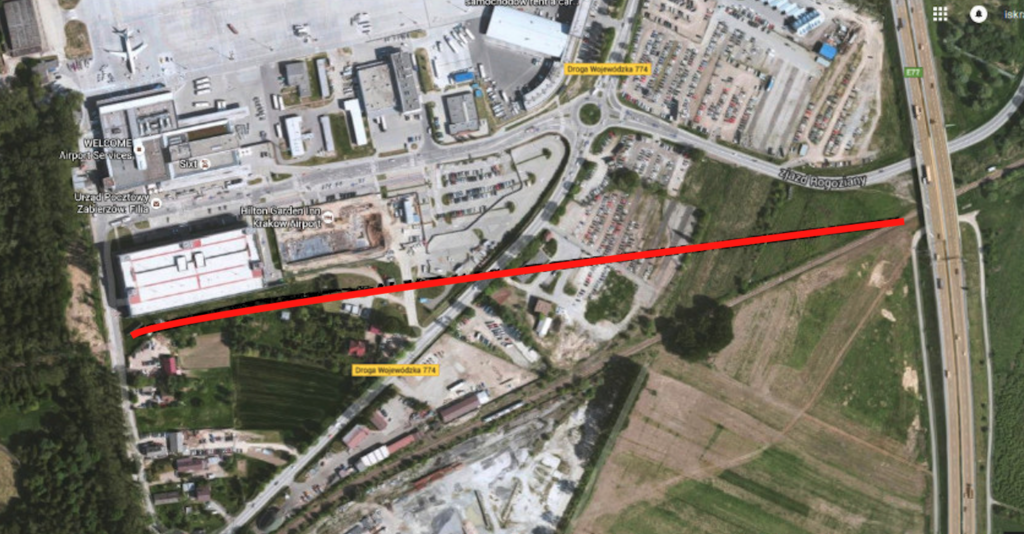
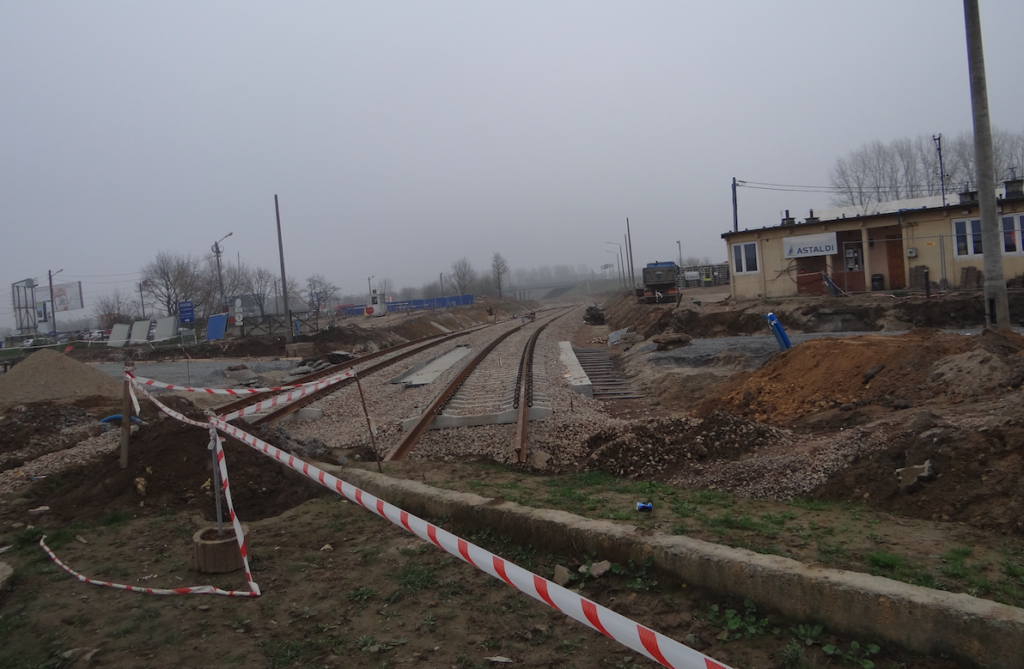
Photo description: The photo shows railway tracks near provincial road no. 774.
A decision was made to build a new railway line on the Mydlniki – Lotnisko route. The line is double-track, electrified. New railway stops were built along the route.
Koleje Małopolskie.
On 2 December 2013, Koleje Małopolskie was established by resolution No. XLIV/705/13. The founding body was the Self-Government of the Małopolskie Province. For the needs of the carrier, the Marshal’s Office of the Małopolskie Province purchased three PESA Acatus Plus EZT EN-64 trains, which were leased by Koleje Małopolskie. PESA is a Polish manufacturer of modern trams and trains, which has its headquarters in Bydgoszcz.
EZT means Electric Traction Unit. Electric trains in Poland were developed already in the second half of the 1930s, which should not be surprising, because electric trams had been running in Lviv since 1894. Earlier than in Vienna. After World War II, the development of electric locomotives in Poland returned only at the end of the 1950s. Their serial production started in 1960. In 1961, the production of the first passenger electric set began, marked EN-57 (max speed 110 km/h) called by travelers “yellow”, due to the standard painting; yellow and blue. These trains were produced by the Pafawag Wrocław plant, until 1997, when the plant was sold. For several years, trains were not produced in Poland.
Around 2005, EZT trains began to be produced by two Polish plants; PESA in Bydgoszcz and NEWAG in Nowy Sącz. They produce regional and long-distance trains. Three-, four- or more cars, which are able to move at a speed of 220 km/h and more. That is why the fact that the Masonic-liberal Government of Prime Minister Donald Tusk purchased Italian Pendolino trains, which only on some sections of modernized railway tracks travel at a speed of 200 km/h was surprising. All this for a huge amount of money, for which Polish plants could build three times more such trains.
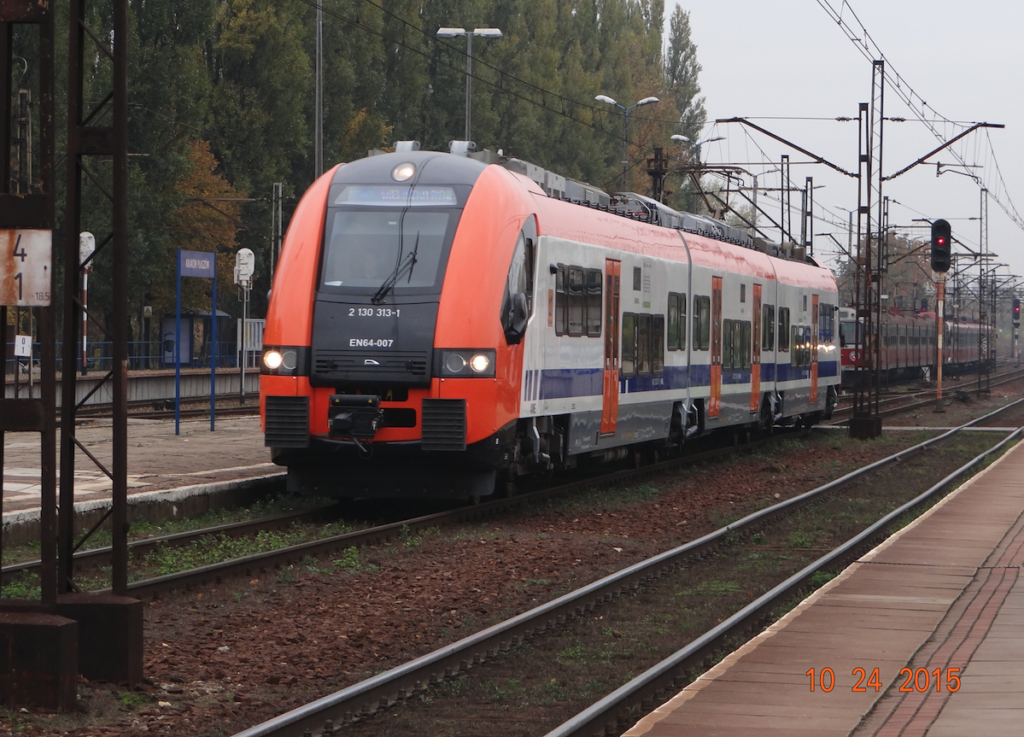
A modern EZT EN-64-007 train no. 2130313 manufactured by PESA, owned by Koleje Małopolskie, running to Balice Airport, standing at Kraków Płaszów station.
EZT PESA trains can consist of three to six cars. Those purchased for Koleje Małopolskie are three-unit. They are equipped depending on the needs of the customer. The user determines the number of toilets (standard toilet for disabled people), seat layout, and even the color of the upholstery and the logo of the transport company, as in the case of airplanes. The standard travel speed of the EZT EN-64 train is 160 km/h. The train is air-conditioned, equipped with a toilet, bicycle racks, electrical sockets, access to WiFi, ticket machines and 138 seats in three cars. The trains have excellent suspension and are quiet inside, and the interior is luxurious.
On November 6, 2014, the first PESA EZT ride took place on the Kraków Główny – Wieliczka Rynek route. Since December 14, 2014, trains have been running regularly. On March 1, 2015, the company received another 4 trains, and on September 1, 2015, another two EZTs. By the end of 2015, Koleje Małopolskie had 10 trains and planned to launch routes to Miechów/Sędziszów and Tarnów in addition to the Kraków – Wieliczka and Kraków – Balice routes. The company also aimed to take over the regional branch of Przewozy Regionalne in Małopolska. Tickets can be purchased from machines at some railway stations, from machines on the train or from the conductor on the train.
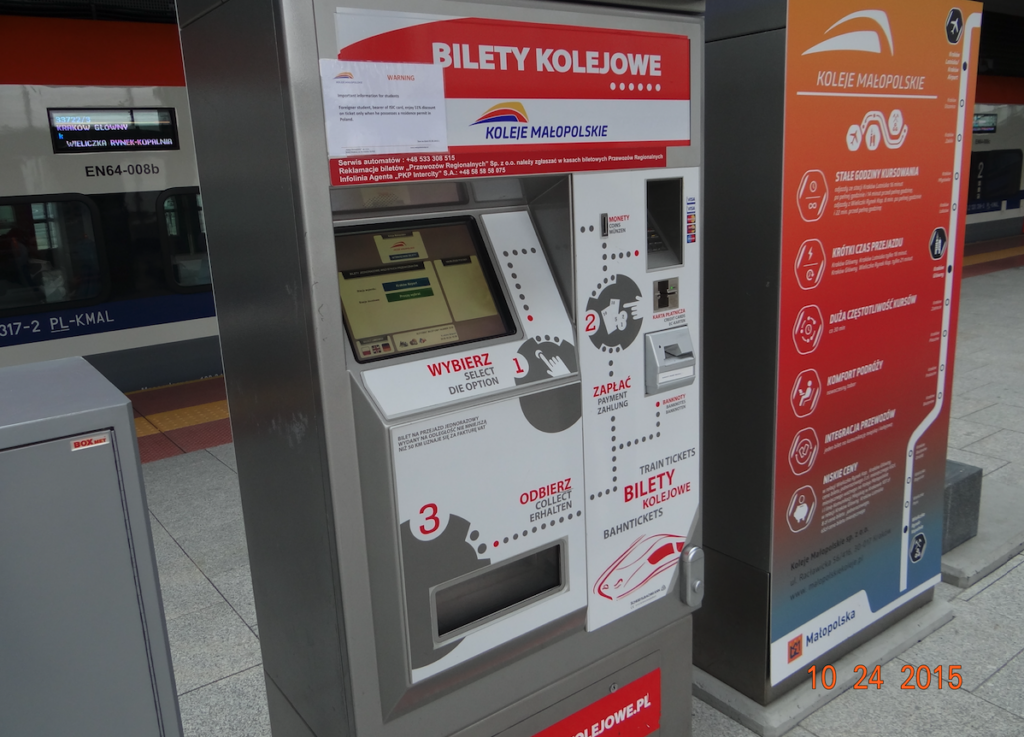
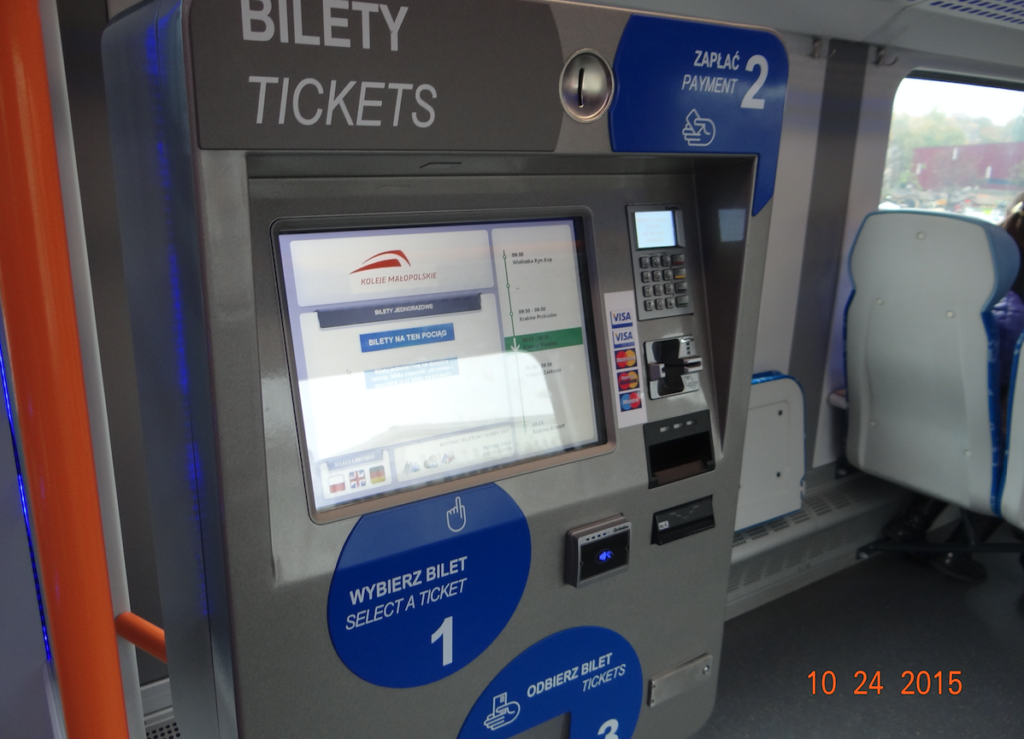
On September 1, 2014, railbuses to Balice were suspended. Preparatory work for the modernization of the railway line was already well advanced. The basic modernization consisted of replacing the single-track, non-electrified section with a double-track, electrified one. The railway number of this line is No. 118. New train stops were built on the route; (counting from the airport) Kraków Lotnisko – Kraków Olszanica – Kraków Zakliki – Kraków Młynówka. Kraków Młynówka is a stop in the area of the Kraków Mydlniki station, but with more convenient access for local residents.
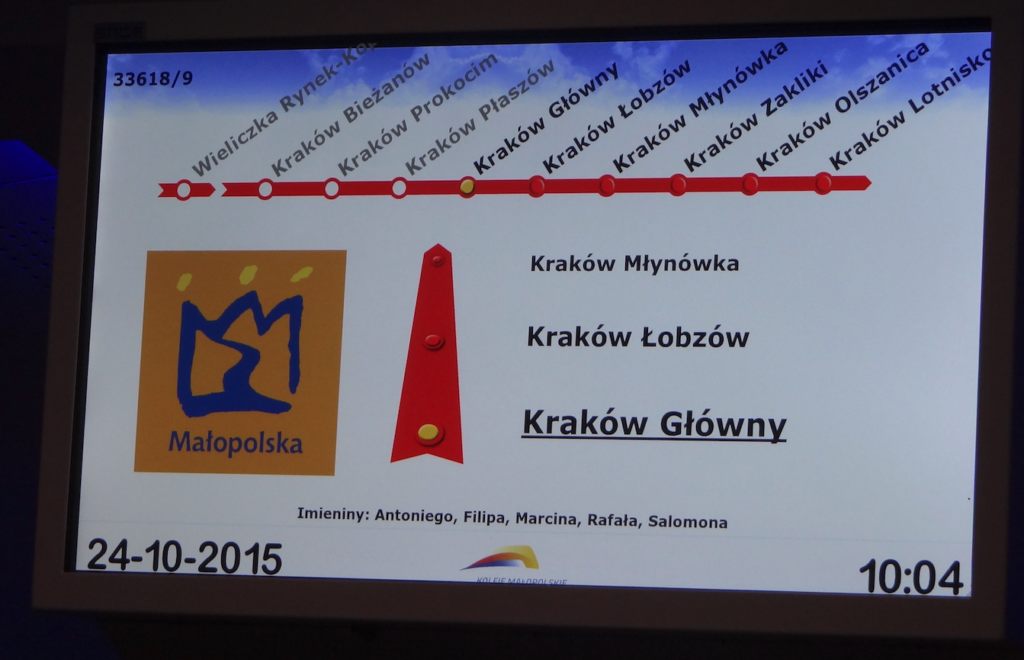
Since September 28, 2015 (Monday), trains have been running on the new tracks on the Wieliczka – Kraków Główny – Balice Airport route. The journey time is 30 minutes, and on the Kraków Główny – Balice Airport section – 17 minutes. Frequency every 30 minutes. Trains depart from the Airport at 16 and 46 minutes past the hour. There are 39 journeys per day. There is a four-hour break at night. Overall, the journey time has not been shortened. It has remained at the previous level, although it should be remembered that there are three new stops at the stops. At the moment, this train is the best means of transport to the Airport. And this in terms of comfort and punctuality.
A standard ticket on the Balice-Kraków Główny route costs 8 złoty, one złoty more than previously in railbuses. On the other hand, a ride from Olszanica, Zaklik and Młynówka to Kraków Główny costs only 3 złoty. This is the result of the actions of the administration of individual districts. The entire route will cost 18 złoty. All statutory discounts on ticket prices apply.
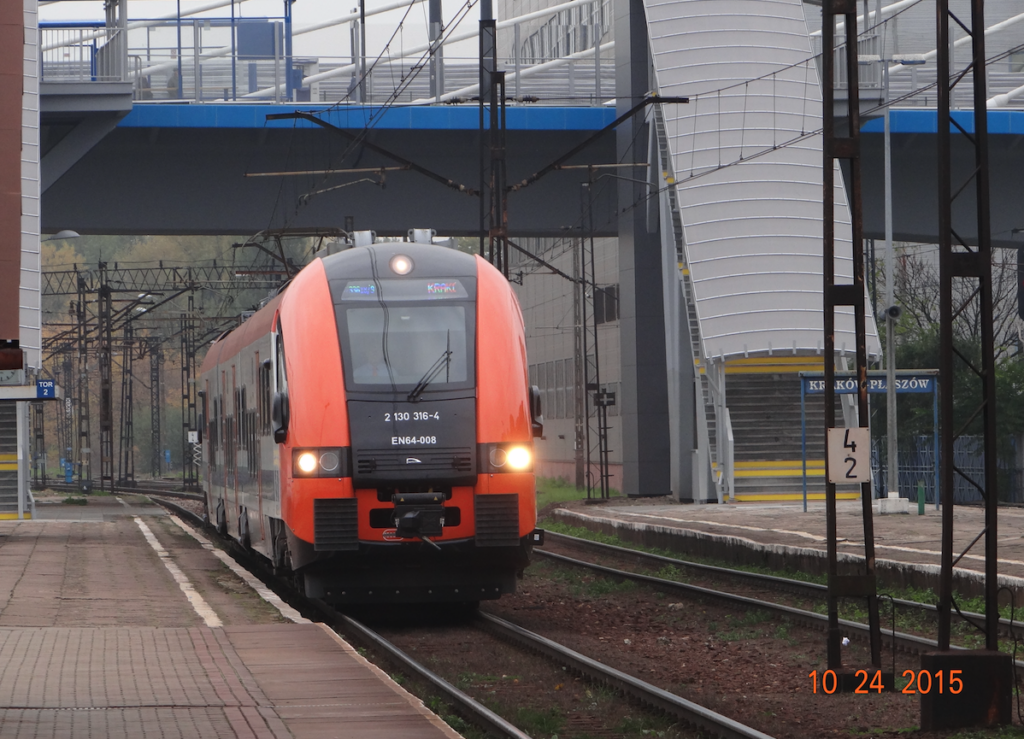
Photo description: EZT EN-64-008 train no. 2130316-4 to Kraków Lotnisko station. Kraków Płaszów station.
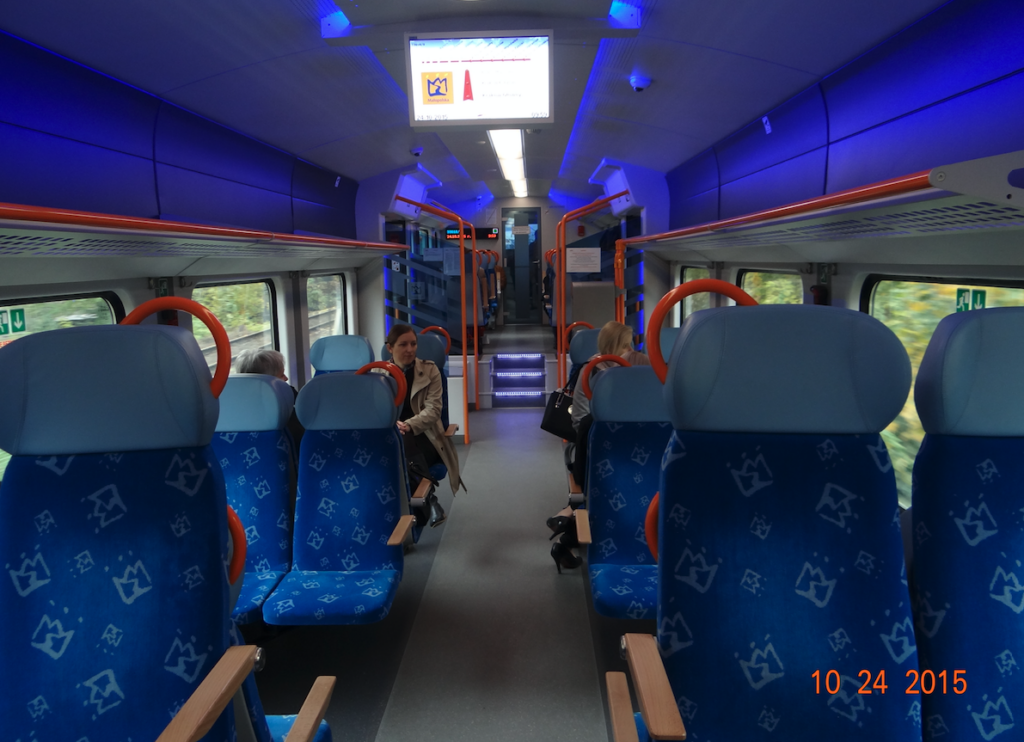
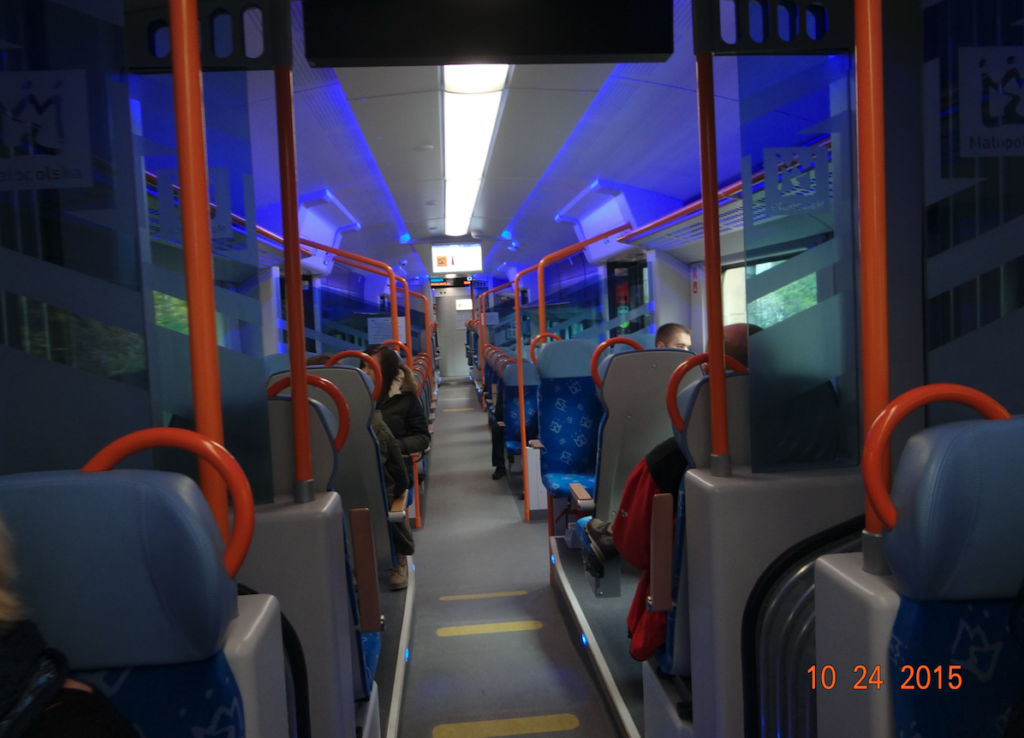
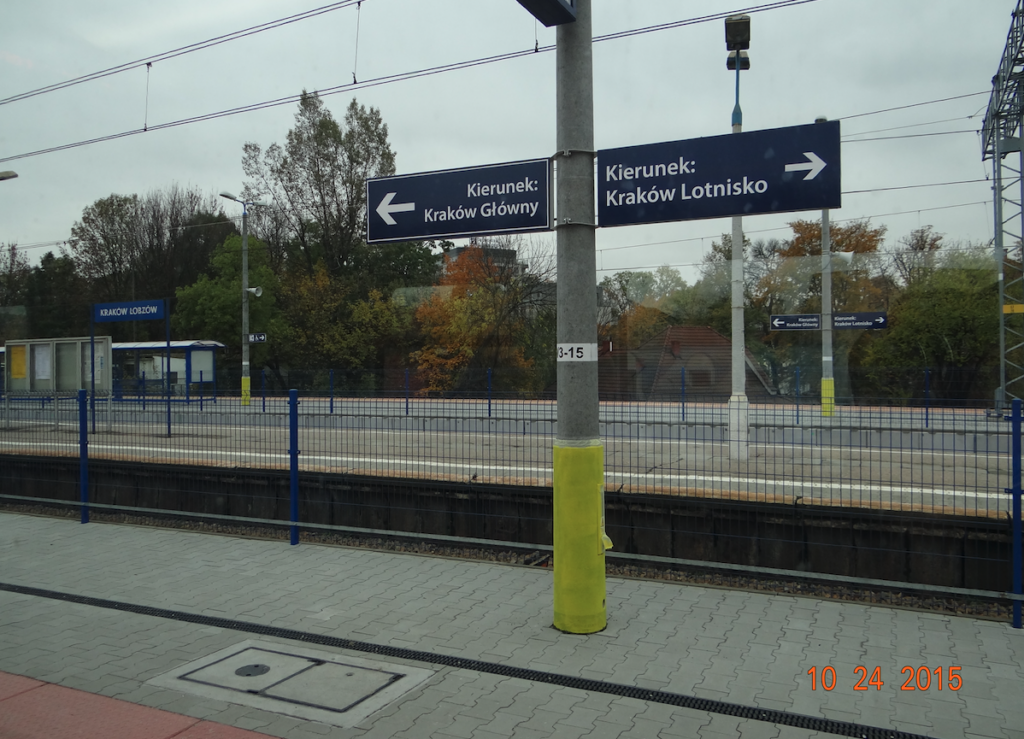
Balice Airport train station.
Balice Airport station is properly called Kraków Airport. On the southern side of the multi-level car park, a train station was built with one platform and two tracks. On the eastern side, the platform has a moving walkway that takes passengers to a covered connector that leads directly to the terminal. On the western side, the platform is open and leads towards the street that also leads to the terminal.
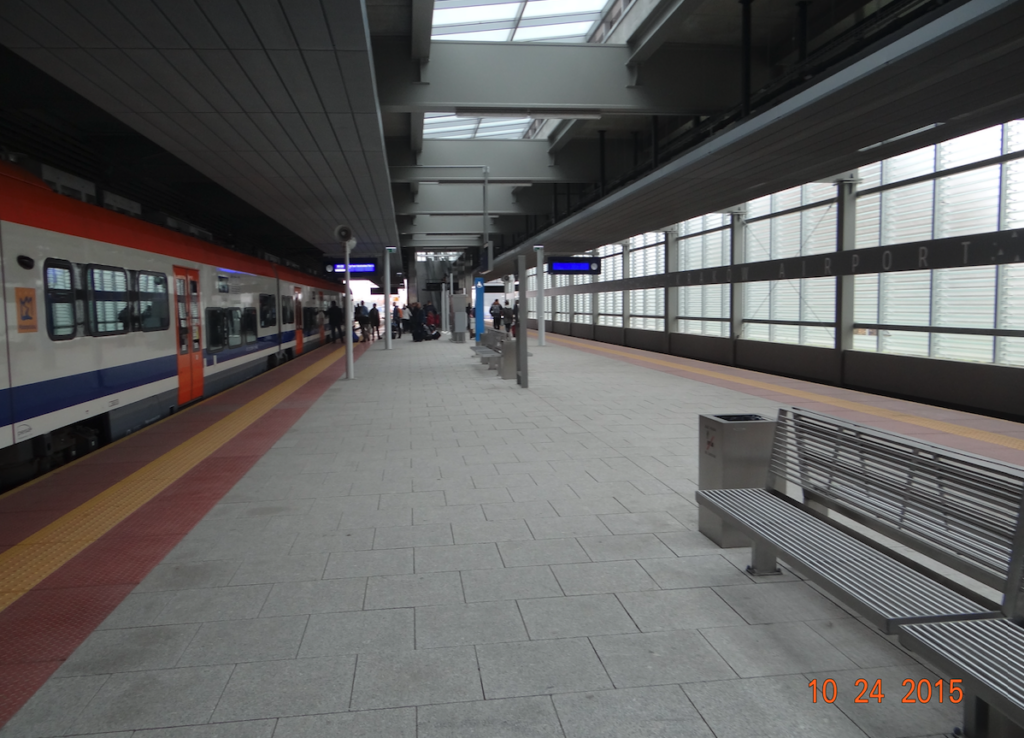
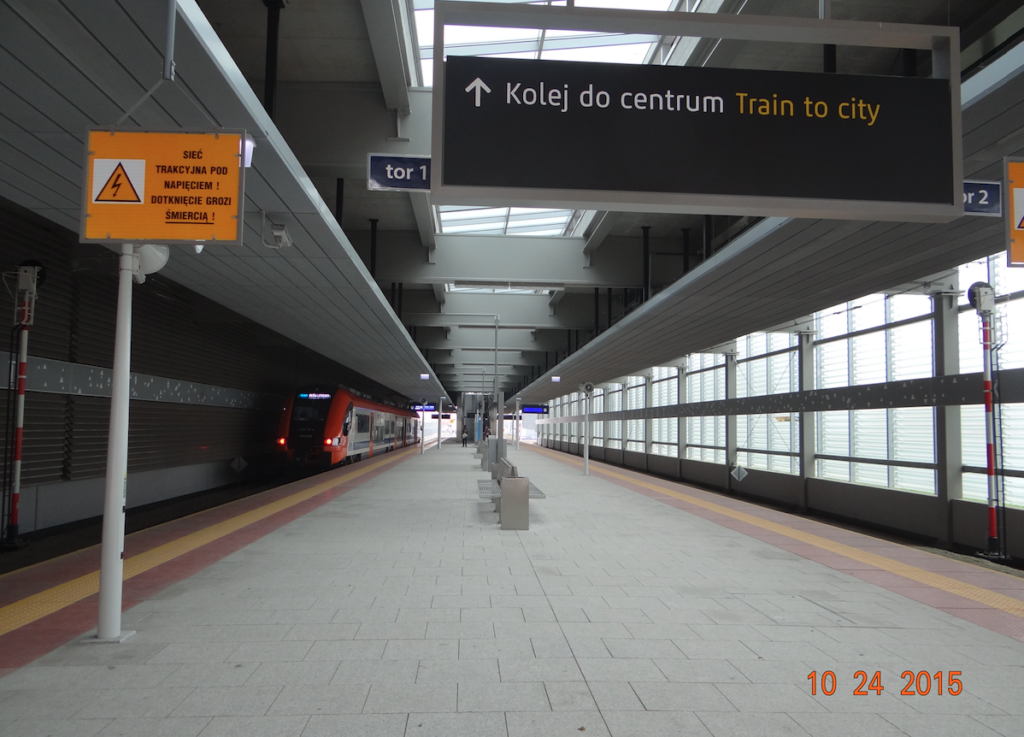
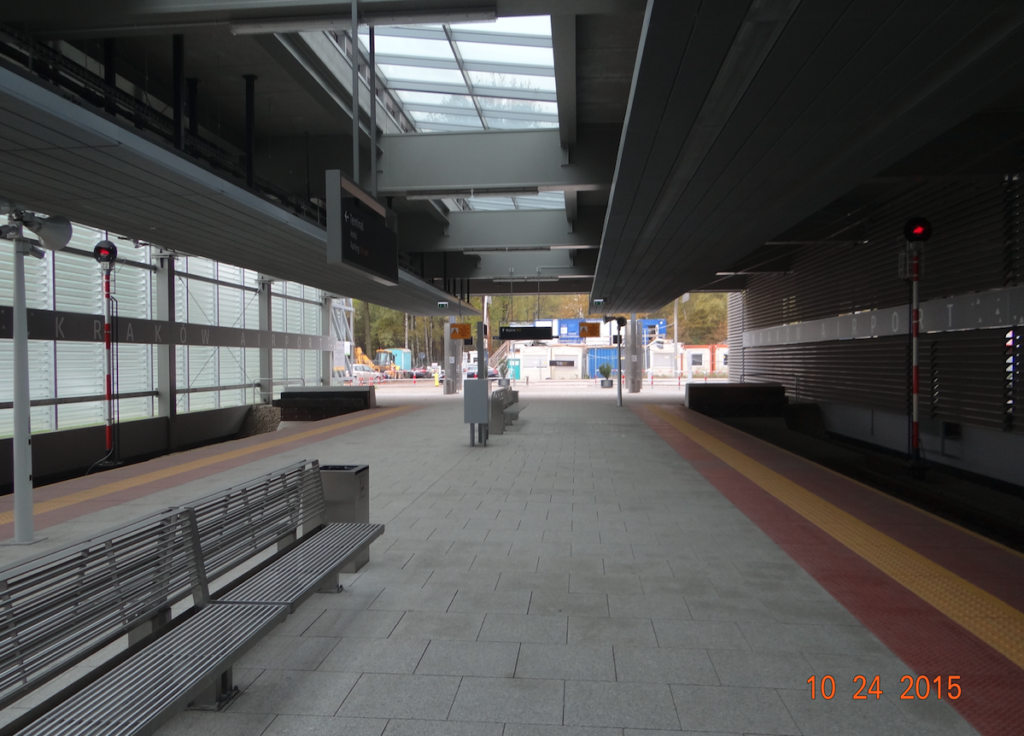
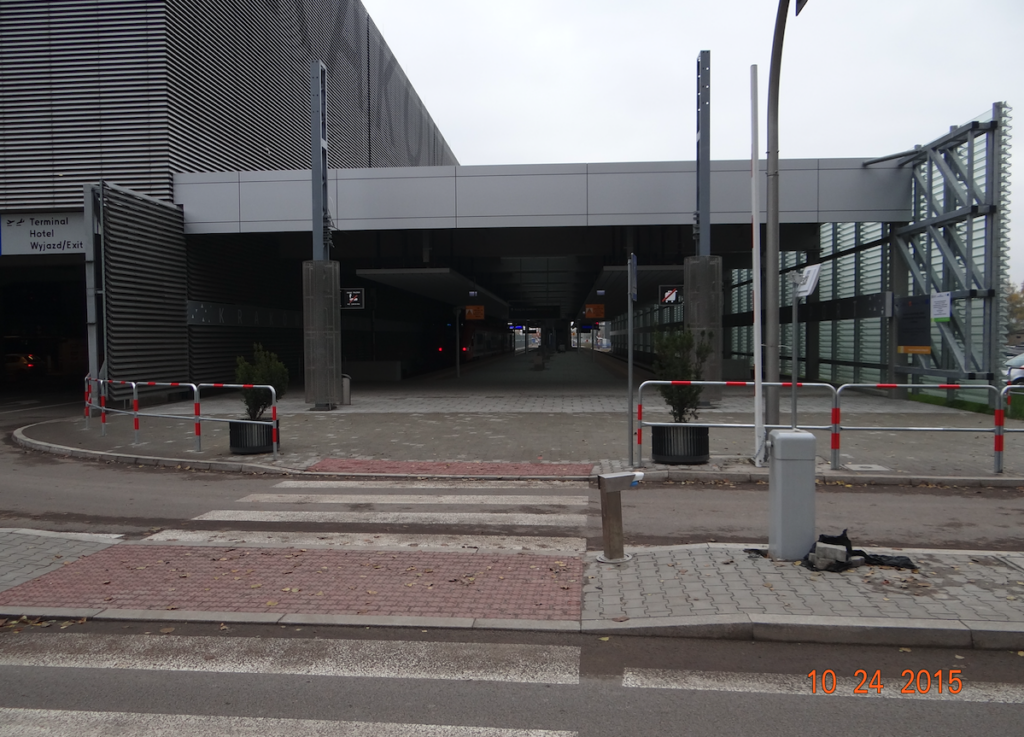
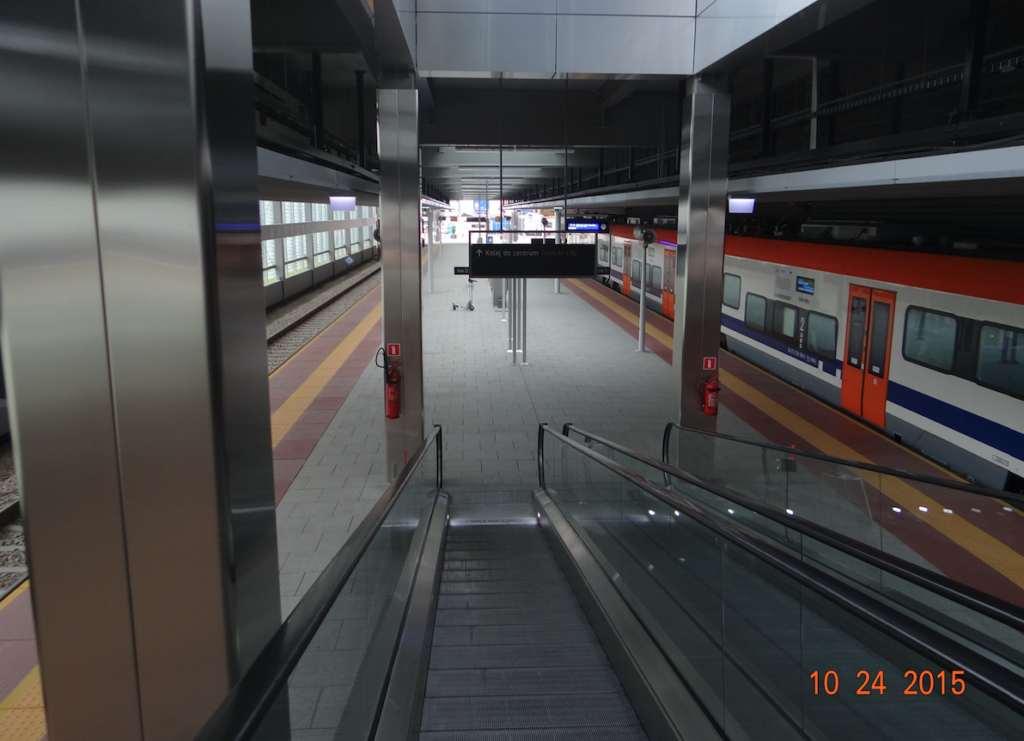
Moving walkway that leads to the terminal via a footbridge.
A 500-meter new section of track was brought to the station. The rest of the railway line is a modernized old track, two new tracks were laid, new passenger stops were built and the line was electrified with 3 kV DC. New switches, bridges, culverts, rail-road crossings should also be added. The Kraków Łobzów stop was also modernized. The platforms were equipped with benches, shelters, lighting and a passenger information system. All platforms were adapted to the needs of disabled people. The investment cost approximately PLN 350 million.
Written by Karol Placha Hetman
